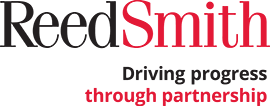Read time: 4 minutes
The new paradigm in scalability
Many asset-heavy companies, including those in the real estate, infrastructure, and data center sectors, are transitioning to asset-light business models. These models aim to reduce capital intensity through the efficient recycling of balance-sheet capital, and by enhancing and expanding flexibility in their business operations, thereby allowing companies to focus on core competencies across each of their business lines.
An asset-light business model typically involves reduced ownership of physical assets and relies more on the operational value that the business can provide in respect of such assets, and generating a higher return on equity.
A key divestment strategy that has gained traction is to “spin off” such assets into fund structures that separately raise new capital and equity from external investors and parties.
The fund approach
This approach includes the establishment of separate fund vehicle(s), such as a private closed-ended “greenfield/brownfield” data center fund, a private open-ended “stabilized assets” data center fund and/or a public real estate investment trust to finance the acquisition of assets held by the parent company with external capital raised.
The parent company would typically retain a minority stake in such assets, while participating and investing in the fund structure (in other words, sharing the ownership and operational risks alongside the new external fund investors).
The attractiveness and growing popularity of this new approach are due to a number of fundamental benefits. For example, the parent company can monetize its assets previously sitting on its balance sheet, diversify its sources of revenue and create new revenue streams (through the receipt of a fund management fee, asset management fee and carried interest) as well as leveraging its asset and operational management skill and reputation in the industry (which is typically reserved for companies that hold such “hard” assets).
From the investor’s viewpoint, the opportunity to invest in funds that adopt such a strategy makes available assets that were traditionally held by, and only accessible to, key industry players. These often longstanding industry players (while not traditionally recognized as “asset managers”) have, since inception, been investing in assets and generating returns based on, and in reliance on, their own balance sheets.
In short, such traditional asset (heavy) owners have effectively restructured themselves from being “managers of assets” to “asset managers” (commonly understood in the investment management sector as fund managers and general partners of funds).
- Divesting balance-sheet assets into dedicated fund vehicles frees up capital and propels return on equity for owner-operators
- Retaining a minority stake while acting as fund manager maintains control and introduces recurring fees, along with carried-interest upside to the yield and potential income returns
- Shifting to an asset-light platform enables scalability, allowing companies to recycle capital at pace and providing flexibility to seize new growth opportunities
